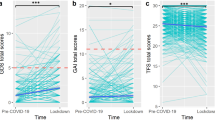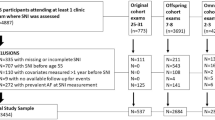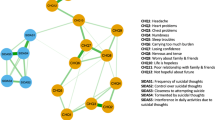Abstract
Every patient is embedded in a social network of interpersonal connections that influence health outcomes. Neurologists routinely need to engage with a patient's family and friends due to the nature of the illness and its social sequelae. Social isolation is a potent determinant of poor health and neurobiological changes, and its effects can be comparable to those of traditional risk factors. It would seem reasonable, therefore, to map and follow the personal networks of neurology patients. This approach reveals influential people, their habits, and linkage patterns that could facilitate or limit health behaviours. Personal network information can be particularly valuable to enhance risk factor management, medication adherence, and functional recovery. Here, we propose an agenda for research and clinical practice that includes mapping the networks of patients with diverse neurological disorders, evaluating the impact of the networks on patient outcomes, and testing network interventions.
This is a preview of subscription content, access via your institution
Access options
Subscribe to this journal
Receive 12 print issues and online access
$209.00 per year
only $17.42 per issue
Buy this article
- Purchase on Springer Link
- Instant access to full article PDF
Prices may be subject to local taxes which are calculated during checkout




Similar content being viewed by others
References
Turner, M. W. The King of Attolia. (Harper Collins, 2009).
Berkman, L. F. & Syme, S. L. Social networks, host resistance, and mortality: a nine-year follow-up study of Alameda County residents. Am. J. Epidemiol. 109, 186–204 (1979).
Seeman, T. E., Kaplan, G. A., Knudsen, L., Cohen, R. & Guralnik, J. Social network ties and mortality among the elderly in the Alameda County Study. Am. J. Epidemiol. 126, 714–723 (1987).
House, J. S., Landis, K. R. & Umberson, D. Social relationships and health. Science 241, 540–545 (1988).
Holt-Lunstad, J., Smith, T. B. & Layton, J. B. Social relationships and mortality risk: a meta-analytic review. PLoS Med. 7, e1000316 (2010).
Steptoe, A., Shankar, A., Demakakos, P. & Wardle, J. Social isolation, loneliness, and all-cause mortality in older men and women. Proc. Natl Acad. Sci. USA 110, 5797–5801 (2013).
Pantell, M. et al. Social isolation: a predictor of mortality comparable to traditional clinical risk factors. Am. J. Public Health 103, 2056–2062 (2013).
Rico-Uribe, L. A. et al. Loneliness, social networks, and health: a cross-sectional study in three countries. PLoS ONE 11, e0145264 (2016).
Nagayoshi, M. et al. Social network, social support, and risk of incident stroke: atherosclerosis risk in communities study. Stroke 45, 2868–2873 (2014).
Rutledge, T. et al. Social networks and incident stroke among women with suspected myocardial ischemia. Psychosom. Med. 70, 282–287 (2008).
Boden-Albala, B., Litwak, E., Elkind, M. S., Rundek, T. & Sacco, R. L. Social isolation and outcomes post stroke. Neurology 64, 1888–1892 (2005).
Kotila, M., Waltimo, O., Niemi, M. L., Laaksonen, R. & Lempinen, M. The profile of recovery from stroke and factors influencing outcome. Stroke 15, 1039–1044 (1984).
Glymour, M. M., Weuve, J., Fay, M. E., Glass, T. A. & Berkman, L. F. Social ties and cognitive recovery after stroke: does social integration promote cognitive resilience? Neuroepidemiology 31, 10–20 (2008).
Fratiglioni, L., Wang, H. X., Ericsson, K., Maytan, M. & Winblad, B. Influence of social network on occurrence of dementia: a community-based longitudinal study. Lancet 355, 1315–1319 (2000).
Fratiglioni, L., Paillard-Borg, S. & Winblad, B. An active and socially integrated lifestyle in late life might protect against dementia. Lancet Neurol. 3, 343–353 (2004).
Bennett, D. A., Schneider, J. A., Tang, Y., Arnold, S. E. & Wilson, R. S. The effect of social networks on the relation between Alzheimer's disease pathology and level of cognitive function in old people: a longitudinal cohort study. Lancet Neurol. 5, 406–412 (2006).
Dunbar, R. I. Coevolution of neocortical size, group size and language in humans. Behav. Brain Sci. 16, 681–694 (1993).
Dunbar, R. I. & Spoors, M. Social networks, support cliques, and kinship. Hum. Nat. 6, 273–290 (1995).
Heide, Von Der, R., Vyas, G. & Olson, I. R. The social network-network: size is predicted by brain structure and function in the amygdala and paralimbic regions. Soc. Cogn. Affect. Neurosci. 9, 1962–1972 (2014).
Dunbar, R. Do online social media cut through the constraints that limit the size of offline social networks? R. Soc. Open Sci. 3, 150292 (2016).
Cacioppo, S., Capitanio, J. P. & Cacioppo, J. T. Toward a neurology of loneliness. Psychol. Bull. 140, 1464–1504 (2014).
Venna, V. R., Xu, Y., Doran, S. J., Patrizz, A. & McCullough, L. D. Social interaction plays a critical role in neurogenesis and recovery after stroke. Transl. Psychiatry 4, e351 (2014).
Venna, V. R. & McCullough, L. D. Role of social factors on cell death, cerebral plasticity and recovery after stroke. Metab. Brain Dis. 30, 497–506 (2015).
Yang, Y. C. et al. Social relationships and physiological determinants of longevity across the human life span. Proc. Natl Acad. Sci. USA 19, 578–583 (2016).
Borgatti, S. P., Everett, M. G. & Johnson, J. C. Analyzing Social Networks. (SAGE, 2013).
Smith, K. P. & Christakis, N. A. Social networks and health. Annu. Rev. Sociol. 34, 405–429 (2008).
Crossley, N. et al. Social Network Analysis for Ego-Nets. (SAGE, 2015).
Nin, N. Social capital. A Theory Of Social Structure And Actions. (Cambridge Univ. Press, 2001).
Granovetter, M. S. The strength of weak ties. AJS 78, 1360–1380 (1973).
Lubbers, M. J., Molina, J. L. & McCarty, C. Personal networks and ethnic identifications: the case of migrants in Spain. Int. Sociol. 22, 721–741 (2007).
Berkman, L. F., Glass, T. A., Brissette, I. & Seeman, T. E. From social integration to health: durkheim in the new millennium. Soc. Sci. Med. 51, 843–857 (2000).
Christakis, N. A. & Allison, P. D. Mortality after the hospitalization of a spouse. N. Engl. J. Med. 354, 719–730 (2006).
Martikainen, P. & Valkonen, T. Mortality after the death of a spouse: rates and causes of death in a large Finnish cohort. Am. J. Public Health 86, 1087–1093 (1996).
Cameron, J. I. et al. One-year outcomes in caregivers of critically ill patients. N. Engl. J. Med. 374, 1831–1841 (2016).
O'Malley, A. J., Arbesman, S., Steiger, D. M., Fowler, J. H. & Christakis, N. A. Egocentric social network structure, health, and pro-social behaviors in a national panel study of Americans. PLoS ONE 7, e36250 (2012).
Eagle, N., Pentland, A. S. & Lazer, D. Inferring friendship network structure by using mobile phone data. Proc. Natl Acad. Sci. USA 106, 15274–15278 (2009).
Burt, R. S. Network items and the general social survey. Soc. Networks 6, 293–339 (1984).
Rost, N. S. et al. Stroke severity is a crucial predictor of outcome: an international prospective validation study. J. Am. Heart Assoc. 5, e002433 (2016).
Agresti, A. & Agresti, B. F. Statistical analysis of qualitative variation. Sociol. Methodol. 9, 204–237 (1978).
Wasserman, S. & Faust, K. Social Network Analysis. (Cambridge Univ. Press, 2009).
Burt, R. S. Structural holes and good ideas. AJS 110, 349–399 (2004).
Stovel, K. & Shaw, L. Brokerage. Annu. Rev. Sociol. 38, 139–158 (2012).
Cornwell, B. Good health and the bridging of structural holes. Soc. Networks 31, 92–103 (2009).
Burt, R. S. Structural Holes. (Harvard Univ. Press, 2009).
Bellotti, E. What are friends for? Elective communities of single people. Soc. Networks 30, 318–329 (2008).
Barabási, A.-L. The architecture of complexity. IEEE Control Syst. Mag. N. Y. 27, 33–42 (2007).
Cornwell, B. & Laumann, E. O. The health benefits of network growth: new evidence from a national survey of older adults. Soc. Sci. Med. 125, 94–106 (2015).
Dhand, A., Luke, D., Tsiaklides, M., Lang, C. & Lee, J.-M. S209. Social network characteristics influence timing of hospital arrival after acute ischemic stroke. Ann. Neurol. 78, S2 (2016).
Reeves, M. J., Prager, M., Fang, J., Stamplecoski, M. & Kapral, M. K. Impact of living alone on the care and outcomes of patients with acute stroke. Stroke 45, 3083–3085 (2014).
Addo, J. et al. Delay in presentation after an acute stroke in a multiethnic population in South London: the South London stroke register. J. Am. Heart Assoc. 1, e001685 (2012).
Valente, T. W. Network interventions. Science 337, 49–53 (2012).
Galanter, M. Alcoholics anonymous and twelve-step recovery: a model based on social and cognitive neuroscience. Am. J. Addict. 23, 300–307 (2014).
Galanter, M. Network therapy for addiction: a model for office practice. Am. J. Psychiatry 150, 28–36 (1993).
Galanter, M. et al. Network therapy: decreased secondary opioid use during buprenorphine maintenance. J. Subst. Abuse Treat. 26, 313–318 (2004).
Hellard, M. et al. Hepatitis C transmission and treatment as prevention - the role of the injecting network. Int. J. Drug Policy 26, 958–962 (2015).
Rolls, D. A. et al. Hepatitis C transmission and treatment in contact networks of people who inject drugs. PLoS ONE 8, e78286 (2013).
Emirbayer, M. & Goodwin, J. Network analysis, culture, and the problem of agency. AJS 99, 1411–1454 (1994).
Acknowledgements
We thank Selena Lee for producing the network video supplement. We also gratefully acknowledge all the patients who contributed to the research contained within the manuscript.
Author information
Authors and Affiliations
Contributions
All authors researched data for the article and contributed equally to discussions of the content. All authors wrote the article and reviewed and/or edited the manuscript before submission.
Corresponding author
Ethics declarations
Competing interests
The authors declare no competing financial interests.
Supplementary information
Supplementary Video 1
The video shows the change in a patient's social network at 3 and 6 months after stroke. Orange lines are strong ties and blue lines are weak ties. (MP4 211 kb)
Glossary
- Diversity of gender index
-
The amount of gender variation in the network, ranging from zero, where all members are the same gender, to one, where there are equal numbers across all gender categories.
- Diversity of race index
-
The amount of racial variation in the network, ranging from zero, where all members are the same race, to one, where there are equal numbers across all racial categories.
Rights and permissions
About this article
Cite this article
Dhand, A., Luke, D., Lang, C. et al. Social networks and neurological illness. Nat Rev Neurol 12, 605–612 (2016). https://doi.org/10.1038/nrneurol.2016.119
Published:
Issue Date:
DOI: https://doi.org/10.1038/nrneurol.2016.119
This article is cited by
-
Applying a biopsychosocial model to migraine: rationale and clinical implications
The Journal of Headache and Pain (2022)
-
Enhancing the role of the social network in activity (re)engagement post-stroke: a focus group study with rehabilitation professionals
BMC Primary Care (2022)
-
Social network structure and composition in former NFL football players
Scientific Reports (2021)
-
Ignorance is not bliss: managing uncertainty in acute stroke treatment in the COVID-19 era
Neuroradiology (2021)
-
Proceedings of the First Curing Coma Campaign NIH Symposium: Challenging the Future of Research for Coma and Disorders of Consciousness
Neurocritical Care (2021)



